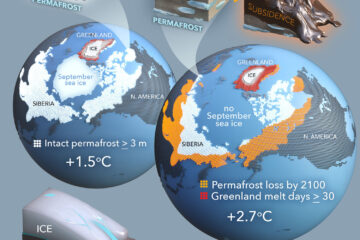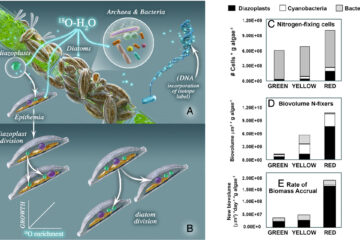Seeing the forest for the trees: long‐term exposure to elevated CO2 increases some herbivore densities
The effects of elevated CO2 on plant growth and insect herbivory have been frequently investigated over the past 20 years. Most studies have shown an increase in plant growth, a decrease in plant nitrogen concentration, an increase in plant secondary metabolites and a decrease in herbivory. However, such studies have generally overlooked the fact that increases in plant production could cause increases of herbivores per unit area of habitat. Our study investigated leaf production, herbivory levels and herbivore abundance per unit area of leaf litter in a scrub-oak system at Kennedy Space Center, Florida, under conditions of ambient and elevated CO2, over an 11-year period, from 1996 to 2007. In every year, herbivory, that is leafminer and leaftier abundance per 200 leaves, was lower under elevated CO2 than ambient CO2 for each of three species of oaks, Quercus myrtifolia, Quercus chapmanii and Quercus geminata. However, leaf litter production per 0.1143 m2 was greater under elevated CO2 than ambient CO2 for Q. myrtifolia and Q. chapmanii, and this difference increased over the 11 years of the study. Leaf production of Q. geminata under elevated CO2 did not increase. Leafminer densities per 0.1143 m2 of litterfall for Q. myrtifolia and Q. chapmanii were initially lower under elevated CO2. However, shortly after canopy closure in 2001, leafminer densities per 0.1143 m2 of litter fall became higher under elevated CO2 and remained higher for the remainder of the experiment. Leaftier densities per 0.1143 m2 were also higher under elevated CO2 for Q. myrtifolia and Q. chapmanii over the last 6 years of the experiment. There were no differences in leafminer or leaftier densities per 0.1143 m2 of litter for Q. geminata. These results show three phenomena. First, they show that elevated CO2 decreases herbivory on all oak species in the Florida scrub-oak system. Second, despite lower numbers of herbivores per 200 leaves in elevated CO2, increased leaf production resulted in higher herbivore densities per unit area of leaf litter for two oak species. Third, they corroborate other studies which suggest that the effects of elevated CO2 on herbivores are species specific, meaning they depend on the particular plant species involved. Two oak species showed increases in leaf production and herbivore densities per 0.1143 m2 in elevated CO2 over time while another oak species did not. Our results point to a future world of elevated CO2 where, despite lower plant herbivory, some insect herbivores may become more common.


